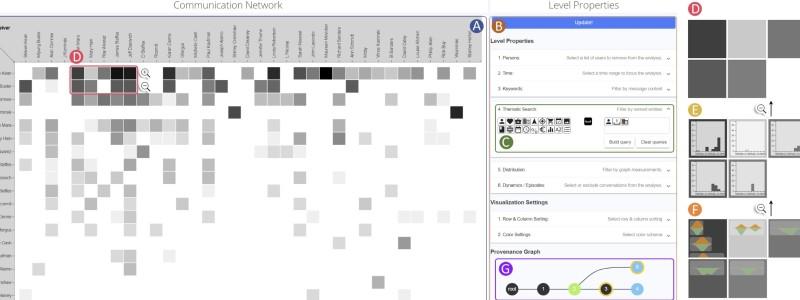
Automated systems for analyzing digital communication, often reliant on AI-driven models and deployed in operational analytics solutions, have become increasingly common in investigative journalism, the intelligence community, and business environments. These automated solutions, however, typically focus on specific aspects like content or network structure in isolation. Additionally, they face challenges related to ethical and privacy concerns and difficulties in efficiently combining heterogeneous data sources for cross-methodological, holistic, and multimodal analytics. Visual analytics, which combines machine learning methods with interactive visual interfaces to enable human sense- and decision-making, can be vital for designing and operating meaningful communication analysis techniques that tackle these challenges. This dissertation explores how communication analysis can be conducted in the digital age, thereby advancing the field of semi-interactive, holistic communication analysis and is divided into four parts: Part I lays the conceptual foundations, reviews the state-of-the-art, and formalizes the field while identifying key challenges. Additionally, it discusses ethical and privacy considerations and proposes ways in which visual analytics can address those issues. Part II introduces techniques related to the identification and interpretation of communication, including a survey of hypergraph visualizations, a technique for the identification of communication, and a method for metadata pattern analysis. Informed by these insights, Part III explores holistic approaches to communication analysis, first from a text-centric perspective and then from a multimodal viewpoint. The concluding Part IV summarizes the findings and anticipates future research directions. The presented techniques and methods are rigorously evaluated through comparative analyses, case studies, and expert evaluations, further discussing their applicability and generalizability. In conclusion, this dissertation frames communication in a coherent context of digital and semi-automated analysis within computer science, structures the field, probes ethical and privacy aspects, and describes how AI-based, multimodal, human-in-the-loop approaches can enhance intelligence analytics.
Related Publication







